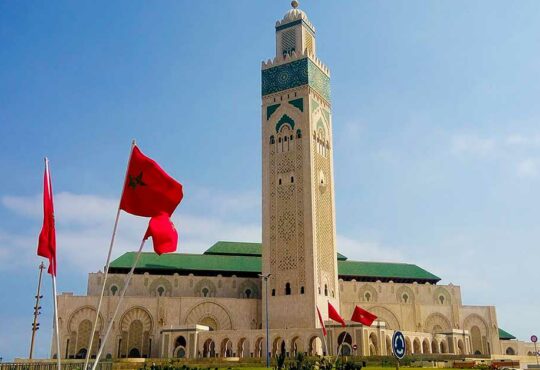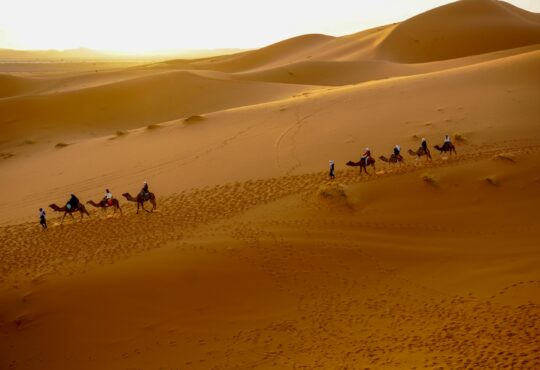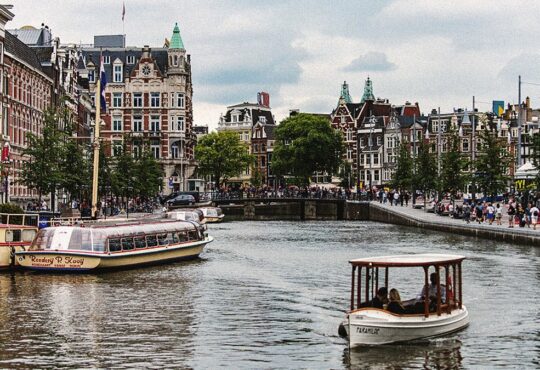Tanzania consistently ranks as one of the top places in Africa to visit for wildlife safaris. What many do not know is that Tanzania is also ranks as one of the world’s top birdwatching and photography spots. Bird photography in Tanzania can be an exciting and rewarding adventure, and we’ll give you some insight into how to make the most out of it.
No time to read to read this post? Pin it to save it for later!
Why birdwatching in Tanzania?
The first thing that makes Tanzania such a great destination for bird photography is the wide variety of species that are native to the country. The avifauna of Tanzania includes over 1000 species. This doesn’t even take into account species from other parts of Africa or southern Europe that appear during the migratory season.
Second, Tanzania’s climate is favorable year-round. Temperatures are generally warm even into their winter months. Even in the coolest months (June through September), the lowest temperatures are still in the range of 20C (68F). In the hottest months, the highest temperatures are generally in the range of 32C (90F). Except near the coast, humidity is relatively low outside the rainy seasons.
Most locations in Tanzania average 8-9 hours of sunlight a day, although this increases or decreases based on the season.
Finally, Tanzania has a wide variety of climates and microclimates. These range from tropical climates near the coast, to the highlands in the north, to the dry, arid plateau area in the center of the country. Each of these climates attracts different species of birds and other wildlife, which leads to the wide variety of species a visitor might see. This variety is what really makes birdwatching in Tanzania so exciting and interesting.
Best locations for birdwatching in Tanzania
The National Parks are some of the best destinations for bird photography in Tanzania. The country’s National Parks organization (TANAPA) focuses on keeping their parks pristine and as close to natural conditions as possible. They also work to keep the animals safe from the encroachment of outside dangers like poachers, modern traffic and chemicals or pesticides. Below are some spots to consider when planning a bird photography trip to Tanzania.
Lake Manyara National Park
Lake Manyara National Park is approximately 280 Km (180 miles) west of Arusha, the nation’s capital. During the rainy season the lake can extend up to 330 sq Km (127 sq miles) but becomes much smaller during the dry season when much of the water evaporates. The dry season is the ideal time to visit, because all the birds generally can be found near the few remaining pools of water in the lake bed.
The park contains upwards of 400 native species of birds. During the migratory season, many additional species from other parts of Africa and Europe can be found in the lake. The park is well-known for various species of waterfowl including many species of pelicans, flamingos, ducks and geese.
Serengeti National Park
Serengeti National Park is one of the larger national park regions in Tanzania, extending over approximately 14,750 sq Km (5,700 sq miles). The landscape in the park ranges from grassland plains to savannas, forest and woodlands. The park is located in the northern part of Tanzania and extends to the border between Tanzania and Kenya.
The park contains well over 500 native species. There are several endangered species in the park, particularly several types of hawks, eagles and kites (family Accipitridae). The open grassland areas of the park also support species like ostriches, bustards, larches, and raptors.
Ngorongoro Conservation Area
The Ngorongoro Conservation Area is 180 km (110 miles) west of Arusha in the crater highlands area of Tanzania. The Area is features mostly plains landscape. It also contains Ngorongoro Crater – the largest inactive volcanic caldera in the world. Because the Conservation Area contains evidence of the earliest hominid life forms, it is often referred to as the Garden of Eden.
The park contains nearly 300 native species of birds. Herons, egrets and bitterns (family Ardeidae) as well as hawks, eagles and kites (family Accipitridae) are among the most common bird species in the Conservation Area.
What Equipment Should You Take For Birdwatching?
When planning for a photographic safari, the question of what equipment to take – and to not take – is extremely important. You can and probably should pack light for a trip to Tanzania, which makes having the right equipment even more essential.
First, you should consider what type of camera to use. Very broadly, you have three choices of formats:
- Full frame cameras: A “full frame” camera is one where the sensor is the same size as a 35mm film frame. Full frame cameras tend to be higher-end equipment and can be packed with lots of features. If you choose to bring a full-frame camera, make sure you spend significant time learning how to operate the functions and when to use them. Full frame cameras will generally provide you with the best image quality, allow for the most cropping of images, and will provide superior low-light images. One downside to be aware of is that full-frame cameras can be larger and bulkier than the other types of cameras we will discuss.
- Crop-frame cameras: A “crop-frame” (or APS-C) camera has a smaller sensor than a full frame camera, and so generally tend to be smaller and lighter cameras. Due to the principles of optical physics, a crop-frame camera gives your lenses a longer effective focal length than they would have on a full frame camera. A 300mm lens on a full frame camera would have an effective length of approximately 420mm with a crop-frame camera. This means you will be able to more effectively capture birds and wildlife that are farther away from you.
- Micro 4/3rds cameras: These cameras have a smaller sensor than the APS-C format. The cameras also use electronic viewfinder (EVF) technology. This allows manufacturers to create smaller and lighter cameras because they do not use prism technology like full- or crop-frame digital SLRs. Image quality for M4/3 cameras is equivalent to that of APS-C sensors, and in some cases are even better.
Pro Travel Tip: I wouldn’t recommend trying to do bird photography with a point-and-shoot camera or with your cell phone. You just won’t be able to get good image quality, and you’ll be disappointed with the results.
Once you choose your camera body, you’ll have to consider lenses. My go-to camera for bird photography is a full-frame body from Nikon, and I generally just take two lenses with me. I have a 70-300mm lens as well as a 24-85mm lens. The long lens lets me zoom into birds in trees or on the ground that are far away from me. The shorter lens lets me capture larger groups of birds in flight or gathering around a water pool. Shots with shorter lenses also can help you show birds in their natural habitat.
If you don’t have a long lens, never fear! Companies like LensRentals.com or RentALens.com allow you to rent equipment affordably and easily. Some local camera stores also provide gear rental services.
You’ll also want to take one or more guidebooks for identifying birds. Some highly recommended selections are listed below:
If you prefer using your smartphone for bird identification, consider the app “eGuide to Birds of East Africa” The guide is available for both Android and iOS devices.
Ready, Set, Go!
Now you have good advice on where to go for the best birdwatching in Tanzania and recommendations on equipment to use. It only remains for you to plan out your trip and go! You’ll have the adventure of a lifetime watching birds in Tanzania.
You may also like:





